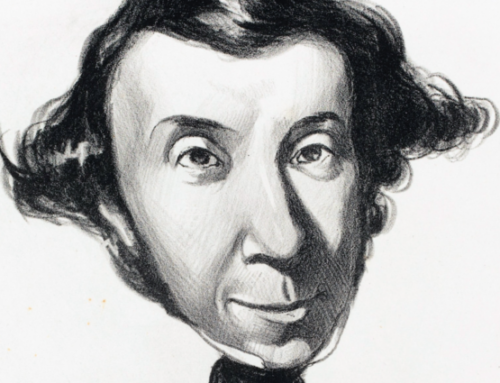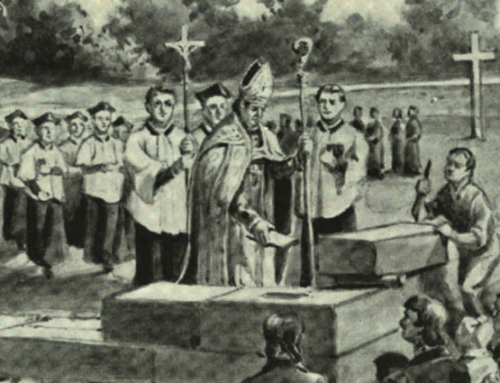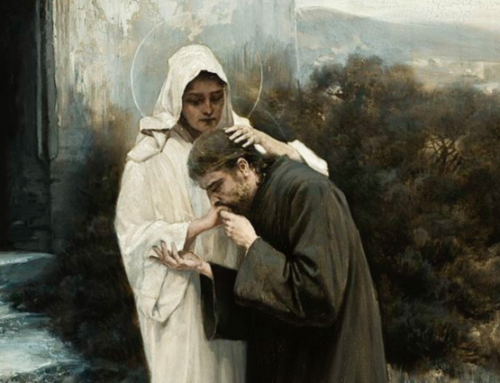The poetry of John Keats is a window into the mad genius of the Romantics: their lusts and hopes; their ambitions and ignorance; their radicalism and fantasies. In reading Keats, one is simultaneously scandalized and sympathetic to the longing of the Romantic heart.
“The best things we have come from madness.” John Keats died only 25 years of age after contracting tuberculosis. During his lifetime he was a remarkably unsuccessful poet despite being propped up by Leigh Hunt and his band of radical writers and poets around the Examiner. Despite his premature death and relative obscurity in those years, Keats grew in immortal fame afterward—becoming a sort of priest and prophet for the more radical Romantics of the nineteenth century who dreamt of abolition, emancipation, and revolution.
Keats grew up in the shadow of the French Revolution, Napoleonic War, and Metternichian settlement which reacted harshly against the radical politics of emancipatory Jacobinism. Keats also grew up in the bosom of materialism and an emerging utilitarianism in his native England, the same hollow materialism that saw earlier forebears like Swift rebel against. It goes without saying that Keats’ two great intellectual fantasies and interests, love and radical politics, were suffocated by the general currents of his day.
“Give me Women, Wine, and Snuff. . . My beloved Trinity.” Keats’ sensual and dramatic poetry, in its eroticism and veiled social commentary, earned him the scorn of Tory reviewers in the English press which effectively killed his poetic career. While Keats saw a vulgar superstition in the “melancholy. . . church bells” and “gloominess” of “horrid” sermons in his day—seeing Christian puritanism as a soul-crushing and love-suppressing religion that contributed to the eradication of romantic love and the consummation of “men of cruel clay”—there is a tragic irony in Keats’ flight from Jerusalem and indulgence in the ruins of Babylon while still carrying with him unconsciously inherited prejudices from Jerusalem. The “Love [that] never dies, but lives, [as] immortal Lord” is not the paganism of Cronus overthrowing Uranus, or Jupiter assaulting Ganymede, but a paganized window dressing of the God of Love.
William Wordsworth rightly described Keats’ poetry as “very pretty paganism.” But the romanticized and mythologized paganism of Keats, while vulgar in its sexual yearnings and fantasies, was a paganism that was as much de-mythologized from its actual roots as it was re-mythologized from an unconscious theology and divinization of Love from the very Christianity Keats was fleeing from in favor of Sodom and Gomorrah. This paganized Christianity which Keats and other second-generation Romantics indulged in, would fit nicely into some neo-pagan circles today which would earn Keats the title of political radical, but not the radicalism sanctioned by contemporary elites.
The disordered passions that Keats eulogized was the exhaustive end of a world that had the baptized heart of sacramentality and the demands of a life of sacrifice stripped away from it. The edifice of Christianity which remained, which was a bulwark against the political radicalism that equally seduced Keats, subsequently became the entombing coffin of the dead body which Keats wanted to desperately resurrect. Keats didn’t want to wait for the Day of Resurrection for Love to be fully consummated and present; “Give me Women, Wine, and Snuff / Until I cry out, ‘Hold, enough!’ / You may do sans objection / Till the day of resurrection; / For, bless my beard, they aye shall be / My beloved Trinity.”
The impulsive passion and fantasized love that Keats wrote of could only have emerged from a theological culture which prized beauty and love. But the romanticizing of the fairness and sensuality of Babylon as something noble and, indeed, salvific, was only possible from a pen who had inherited that theological culture which affirmed beauty and love as giving life to the world. “A thing of beauty is joy forever” is very true, but not from the city of frenzied confusion and sizzling lusts which Keats danced in.
Part of the project of Keats’ poetry was to reenchant a dead world. This effort was needed in his day and remains needed in our day. However, in this ambition to help reenchant, and re-mystify, the world, Keats overlooked Christianity and that religion whose God is Love.
“The Eve of St. Agnes,” one of Keats’ later poems and rich—if not overly sensual—masterpieces, tells the tale of two virginal lovers erotically embracing each other and fleeing outward into a storm. This poem, more than others, so concisely captures the madness of Keats’ poetry. The educated reader is torn between shock and sympathy as he writes soteriological poetry in the cold and dark confines of Christianity while the spirit of Christianity looms over Keats’ entire project to the knowledgeable reader.
At the beginning of the poem we are introduced to a Beadsman in a cold and frozen environment. The cold and frozen environment, like Dante’s hell, is symbolic of the coldness of a place without love at its heart. Very quickly, however, we learn the Beadsman is praying the Rosary and Keats’ condemnation becomes clear for all readers: Christianity is responsible for the coldness of the world now occupied which forbids romantic love. The Beadsman is too busy praying and engaged in dark ritualistic piety than he is living a life of warming love; Keats’ social commentary is at once esoteric as it is exoteric. As the Beadsman retires inside a house, which is reminiscent of a monastery or Christian structure or chapel, “his deathbell rung.”
Inside this cold and moonlit place are two impassioned virgins, Porphyro and Madeline. Keats’ imagery and descriptions of their fantasizing and bodily actions can only be described as the descriptive language of boyhood fantasies. But Madeline’s sensual dancing and undressing, and Porphyro’s lusts, tell another story. Madeline is a modern girl repressed by the structures and world around her. Porphyro is an old god, like Cupid, needing to rescue his Psyche, Madeline, for light and warmth to reenter the world.
Keats was a philhellene, not altogether dissimilar from other Romantic poets from England like Lord Byron or Percy Bysshe Shelley. That the two lovers have two radically different names, one harkening back to antiquity and another common to nineteenth century England, is very much part of the story of erotic revival that Keats wishes to tell. Moreover, Madeline’s transfiguration is reminiscent of Aphrodite’s birth, and Porphyro’s gaze like any pubescent boy longing to be in the place of Paris at the Judgement of Athena, Aphrodite, and Hera.
Porphyro and Madeline are both resurrected in their longings for love. Porphyro “played an ancient ditty, long since mute.” Madeline awoke, “Her blue affrayed eyes wide open shone,” as “she uttered a soft moan.” In this moment, perhaps the mad climax of Keats’ fantastical imagination, the first contrast to the coldness and frozenness of the dead world the poem began with is revealed; Porphyro’s whispering and pleasant playing is described as “warm.” Furthermore, the flight of Porphyro and Madeline from their imprisoning castle begins at dawn, in contrast to the cold and dark night that dominated much of the poem. The burning hearts of Porphyro and Madeline burn for the illicit loves of the body crackling away in the frying pan of sensualism instead of finding the love offered by the Author of Love.
Keats’ love poetry is a remarkable achievement all things considered. Yet, it pales in comparison to the substance of George Herbert and the religious poets who predated him. In contrast to that great English poet of centuries earlier, Keats’ eulogies of love borders on mad parody of Love which Herbert more truthfully and powerfully captured:
Love bade me welcome. Yet my soul drew back
Guilty of dust and sin.
But quick-eyed Love, observing me grow slack
From my first entrance in,
Drew nearer to me, sweetly questioning,
If I lacked any thing.
A guest, I answered, worthy to be here:
Love said, You shall be he.
I the unkind, ungrateful? Ah my dear,
I cannot look on thee.
Love took my hand, and smiling did reply,
Who made the eyes but I?
Truth Lord, but I have marred them: let my shame
Go where it doth deserve.
And know you not, says Love, who bore the blame?
My dear, then I will serve.
You must sit down, says Love, and taste my meat:
So I did sit and eat.
Keats also desired the nourishment and fulfillment of love, even the love of “one moment’s pleasure.” “Hither, hither, love – / Tis a shady mead – / Hither, hither, love, / Let us feed and feed!” Where Herbert’s Love informed by Christianity is satiating and redeeming, Keats’ love is fleeting and ends only with death. “Hither, hither, hither, / Love this boon has sent – / If I die and wither / I shall die content.” Herbert’s nourishment of the soul from the plate of true meat shows the emptiness of the carnal meat that enslaved Keats’ heart and imagination. The “bright torch. . . [and] warm Love” to which Keats sings his songs of praise is a different Love than the Love of Christianity. Keats fell for the same conception of “love” which flung Francesca and Paolo into the torrential storm of lust in hell.
Between Aristophanes and Glaucon, Keats falls into the tradition begotten by Aristophanes. The poetry of Keats is a window into the mad genius of the Romantics: their lusts and hopes; their ambitions and ignorance; their radicalism and fantasies. In reading Keats, one is simultaneously scandalized and sympathetic to the longing of the Romantic heart like the burning hearts of Porphyro and Madeline who awoke only to run into a storm akin to Dante’s abode of the lustful. “Fanatics have their dreams,” and Keats was undeniably a fanatic who dreamed dreams. It is truly a poetic irony that the prophet who sang and danced for love died in the city conquered by the Author of Love. Genius is often a form of madness, and a mad genius Keats certainly was. If Christians were able to baptize Plato, Aristotle, and Virgil, so too should Christians be able to baptize the poetic splendor of John Keats as a road to George Herbert instead of ending with Porphyro and Madeline running into the eternal storm of lust to join Francesca and Paolo.
This essay was first published here in May 2019.
The Imaginative Conservative applies the principle of appreciation to the discussion of culture and politics as we approach dialogue with magnanimity rather than with mere civility. Will you help us remain a refreshing oasis in the increasingly contentious arena of modern discourse? Please consider donating now.
Referenced Poems
John Keats:
“Give me Women, Wine, and Snuff”
“Written in Disgust of Vulgar Superstition”
“Hither, hither, love—”
“Isabella: Or the Pot of Basil”
“On the Eve of St. Agnes”
“Endymion”
“Ode to Psyche”
“The Fall of Hyperion: A Dream”
George Herbert:
“Love (III)”
The featured image is a portrait of John Keats (c. 1823) by Joseph Severn (1793-1879), and is in the public domain, courtesy of Wikimedia Commons.








Most interesting – thank you!